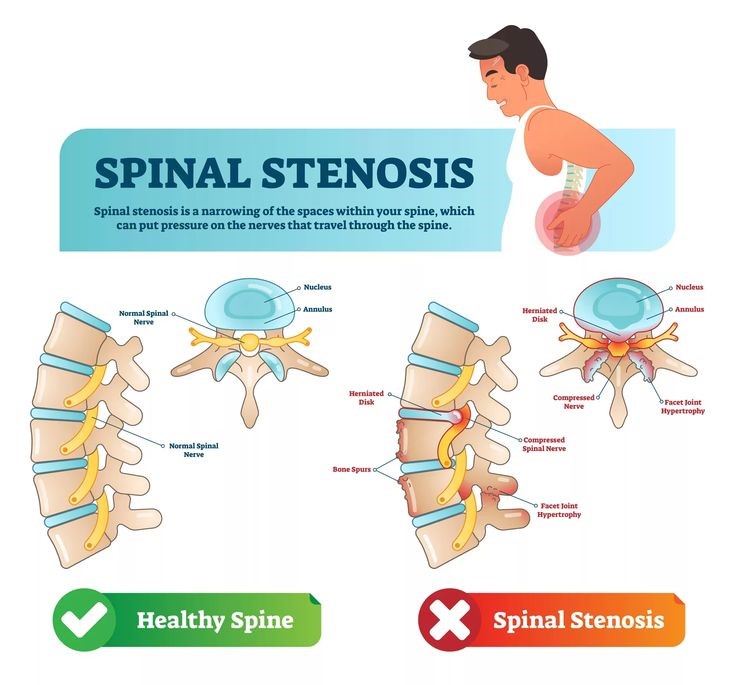Spinal stenosis is a condition characterized by the narrowing of the spinal canal, which can lead to pressure on the spinal cord and nerves. This often results in symptoms such as pain, numbness, and weakness, primarily in the back and limbs. As healthcare continues to advance, researchers and medical professionals are perpetually investigating novel treatments for spinal stenosis. This essay will explore the newest treatment options for spinal stenosis, focusing on their efficacy, underlying mechanisms, and benefits.
Table of Contents
ToggleUnderstanding Spinal Stenosis
Before delving into the latest treatments, it is crucial to understand the pathology of spinal stenosis. This condition often arises from age-related degeneration, spinal disc herniation, or conditions such as arthritis. Symptoms can vary widely among individuals, making personalized treatment approaches essential. Traditionally, the management of spinal stenosis has included physical therapy, medications, and, in severe cases, surgical interventions.
Innovative Treatment Approaches
Recently, new treatment modalities have emerged, expanding the options available to patients suffering from spinal stenosis. Among the most noteworthy are minimally invasive procedures, cutting-edge therapies, and advancements in surgical techniques.
-
Minimally Invasive Surgery
One of the most promising developments in the treatment of spinal stenosis is minimally invasive surgery (MIS). This technique involves smaller incisions and less tissue disruption compared to traditional open surgery. MIS aims to alleviate symptoms by decompressing the nerves or spinal cord through a more efficient approach. Techniques such as microdiscectomy and endoscopic foraminotomy have gained traction due to their shorter recovery times and reduced postoperative pain.
-
Injection Therapies
Injection therapies have also gained prominence as a non-surgical treatment for spinal stenosis. Corticosteroid injections can help reduce inflammation and alleviate pain. More recently, advanced versions of these injections, such as platelet-rich plasma (PRP) and stem cell therapy, are being explored. These regenerative treatments leverage the body’s natural healing processes to promote tissue regeneration and improve function. Initial studies indicate that injection therapies can provide significant relief for some patients suffering from spinal stenosis.
-
Biologics and Regenerative Medicine
In the realm of spinal stenosis treatment, the use of biologics represents a groundbreaking advancement. Biologics include a range of products derived from living organisms that can enhance healing. For spinal stenosis, agents like stem cells and growth factors may offer the potential to regenerate damaged tissues and restore spinal function. Early clinical trials have shown promise, suggesting that biologic treatments may complement traditional therapies and ultimately provide more comprehensive care.
-
Physical Therapy Innovations
While not new, physical therapy has seen an evolution in techniques and methodologies aimed specifically at managing spinal stenosis. Tailored exercise regimens focusing on core strengthening, flexibility, and posture correction can relieve pressure on the spine. Additionally, the integration of technology, such as virtual reality and biofeedback, has enhanced therapy outcomes. These innovations provide patients with engaging and personalized treatment plans that cater to their specific needs.
-
Robotic-Assisted Surgery
Robotic technology is revolutionizing many fields of medicine, and spinal surgery is no exception. Robotic-assisted surgery for spinal stenosis allows for greater precision and control during procedures. Surgeons can utilize robotic systems to navigate complex anatomy, reduce surgical risks, and enhance recovery times. Early reports have indicated that patients undergoing robotic-assisted spinal stenosis surgeries experience fewer complications and improved postoperative results.
Patient-Centric Considerations
As the landscape of spinal stenosis treatment evolves, patient-centered care becomes increasingly essential. New treatment methodologies must not only focus on alleviating symptoms but also address patients’ overall quality of life. Shared decision-making between healthcare providers and patients is crucial in selecting the most appropriate treatment strategies. Moreover, understanding the potential risks and benefits of each option can empower patients to take an active role in managing their condition.
Future Directions in Spinal Stenosis Treatments
Research into spinal stenosis treatments continues to progress at an accelerated pace. As understanding of the underlying biological mechanisms deepens, it is likely that even more innovative therapies will emerge. Ongoing studies are investigating gene therapy, novel pharmacologic agents, and further advancements in device technology. It is imperative for healthcare professionals to remain informed about these developments to provide the highest standard of care.
Conclusion
In summary, the newest treatment options for spinal stenosis represent a confluence of technological innovation and an increased understanding of the condition. Minimally invasive procedures, injection therapies, biologics, physical therapy advancements, and robotic-assisted techniques hold great promise in enhancing patient outcomes. As research continues, there is hope for further breakthroughs that may ultimately transform the management of spinal stenosis, allowing individuals to regain mobility and improve their quality of life. As we move forward, it remains essential to prioritize patient needs and ensure that emerging treatments are safe, effective, and accessible to all those affected by this debilitating condition.
